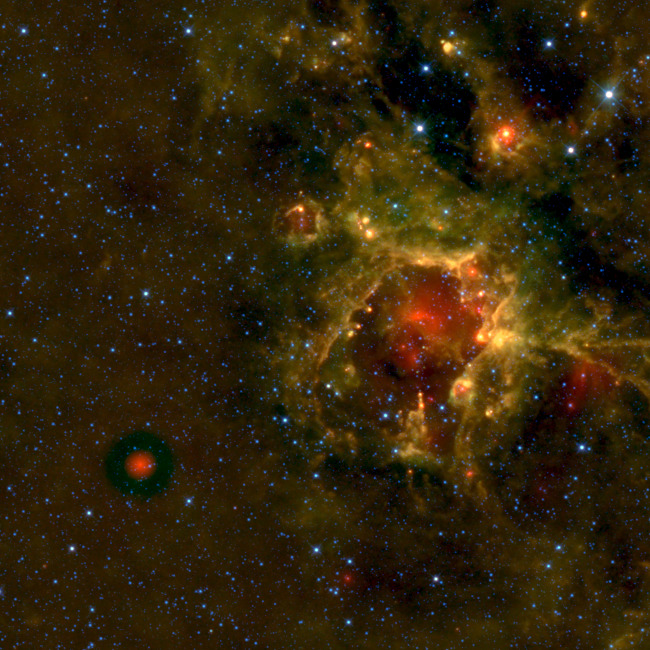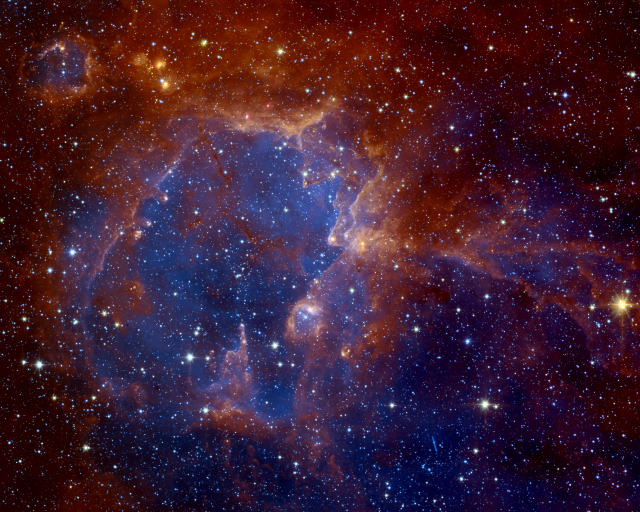Cygnus X image
As part of the annual meeting of the American Astronomical Society, NASA released today the most detailed ever infrared image of the Cygnus X region.
The mysterious Cygnus X region is the closest major star formation region to our solar system. It dwarfs the more local star formation regions in the Gould Belt such as Sco OB2 and the Orion molecular clouds. At visual frequencies Cygnus X is obscured by the Rift dust clouds. It was originally detected at radio frequencies and now a team led by Harvard astronomer Joseph Hora has revealed its full glory using infrared images from the Spitzer space telescope.
Hora tells me that astronomer-illustrator Robert Hurt helped to create the image. It is based on data collected before Spitzer ran out of coolant and combines four infrared frequencies.
Up to this point, the most detailed Cygnus X image available was this one from MSX (the Spitzer image is rotated roughly 90 degrees to the MSX image). I'll add the new Spitzer image to the Milky Way Explorer in the near future.
I blogged about the distance to Cygnus X in November 2010 and noted that there was a controversy about whether the objects in this direction are really part of a single region. A recent paper uses radio parallax measurements to establish that there is indeed a single major star formation region in this direction and like our own Gould Belt, it is part of the Orion spur.
The infrared image is centered upon the compact starburst cluster and OB association Cyg OB2, which has created a huge bubble in the interstellar medium. The radio parallax study shows that many other objects in this direction and at a similar distance have motions different from the expanding bubble surrounding Cyg OB2 and so probably developed independently from Cyg OB2 within the same gigantic molecular cloud.


